Redirection Waveguide having Discrete Translational Symmetry for Photovoltaic Systems with Solar-Cell Units Placed at the Periphery
Abstract
:1. Introduction
2. Experiments on Photon Propagation-Direction Control with Paraboloid Sheets
3. Simulations and Discussions.
3.1. Light Propagation from the Core to Core of the Mainstream Waveguide
3.2. Light Propagation from Tributary to Mainstream
3.3. Merging of Light-Wave from the Mainstream and that from the Tributary
3.4. Light Propagation from Tributary to Mainstream in a Long Distance
4. Conclusions
5. Patents
Author Contributions
Funding
Acknowledgments
Conflicts of Interest
References
- Sze, S.M. Solar cells, In Physics of Semiconductor Devices, 2nd ed.; John Wiley & Sons: New York, NY, USA, 1981; pp. 790–838. [Google Scholar]
- Green, M.A.; Hishikawa, Y.; Dunlop, E.D.; Levi, D.H.; Ebinger, J.H.; Ho-Baillie, A.W. Solar cell efficiency tables (version 51). Prog. Photovolt. Res. Appl. 2018, 26, 3–12. [Google Scholar] [CrossRef]
- Liu, M.; Jonson, M.B.; Snaith, H.J. Efficient planar heterojunction perovskite solar cells by vapour deposition. Nature 2013, 501, 395–398. [Google Scholar] [CrossRef] [PubMed]
- van Sark, W.G.J.H.M.; Barnham, K.W.J.; Slooff, L.H.; Chatten, A.J.; Büchtemann, A.; Meyer, A.; McCormack, S.J.; Koole, R.; Farrell, D.J.; Bose, R.; et al. Luminescent solar concentrators—A review of recent results. Optics Express 2013, 16, 21773–21792. [Google Scholar] [CrossRef]
- Li, C.; Chen, W.; Wu, D.; Quan, D.; Zhou, Z.; Hao, J.; Qin, J.; Li, Y.; He, Z.; Wang, K. Large stokes shift and high efficiency luminescent solar concentrator incorporated with CuInS2/ZnS quantum dots. Sci. Rep. 2015, 5, 1–9. [Google Scholar] [CrossRef] [PubMed]
- Luminescent Solar Concentrators. Available online: http://uml.chemistry.unimelb.edu.au/research-2/luminescent-solar-concentrators/ (accessed on 7 December 2018).
- Suemori, K.; Miyata, T.; Hiramoto, M.; Yokoyama, M. Vertical junction type organic photovoltaic cells. Jpn. J. Appl. Phys. 2004, 43, 1094–1096. [Google Scholar] [CrossRef]
- Parrott, J.E. The limiting efficiency of an edge-illuminated multigap solar cell. J. Phys. D: Appl. Phys. 2001, 12, 441. [Google Scholar] [CrossRef]
- Ishibashi, A. Solar Cells and Photovoltaic Devices. Jpn. Pat. 4022631, 2007. [Google Scholar]
- Ishibashi, A.; Kawaguchi, N.; Kondo, K.; Kaiju, H.; White, S. Spiral-heterostructure-based new high-efficiency solar cells. In Proceedings of the International Symposium on Environmentally Conscious Design and Inverse Manufacturing (Ecodesign 2009), Sapporo, Japan, 7–9 December 2009; pp. 55–57. [Google Scholar]
- Ishibashi, A. Solar Cells and Photovoltaic Devices. Jpn. Pat. 5392795, 2013. [Google Scholar]
- Ishibashi, A. Solar Cells. Jpn. Pat. 5252147, 2013. [Google Scholar]
- Ishibashi, A.; Matsuoka, T. Photovoltaic Devices, Buildings, and Electronic Devices. Jpn. Pat. 6261088, 2017. [Google Scholar]
- Ishibashi, A.; Kobayashi, H.; Sawamura, N.; Kondo, K.; Kasai, T. Symmetric and asymmetric wave-guides for multi-striped orthogonal photon-photocarrier-propagation solar cells. In Proceedings of the 2017 International Conference on Applied System Innovation (ICASI), Sapporo, Japan, 13–17 May 2017; pp. 1477–1479. [Google Scholar]
- Ishibashi, A.; Kobayashi, H.; Taniguchi, T.; Kondo, K.; Kasai, T. Optical simulation for multi-striped orthogonal photon-photocarrier-propagation solar cell (MOP3SC) with redirection waveguide. 3D Res. 2016, 7, 1–5. [Google Scholar] [CrossRef]
- FullWAVE. Available online: https://www.synopsys.com/optical-solutions/rsoft/passive-device-fullwave.html (accessed on 8 December 2018).
- Chuang, S.L. Physics of Optoelectronic Devices; John Wiley & Sons: New York, NY, USA, 1995; pp. 242–282. [Google Scholar]
- ModePROP. Available online: https://www.synopsys.com/optical-solutions/rsoft/passive-device-modeprop.html (accessed on 8 December 2018).

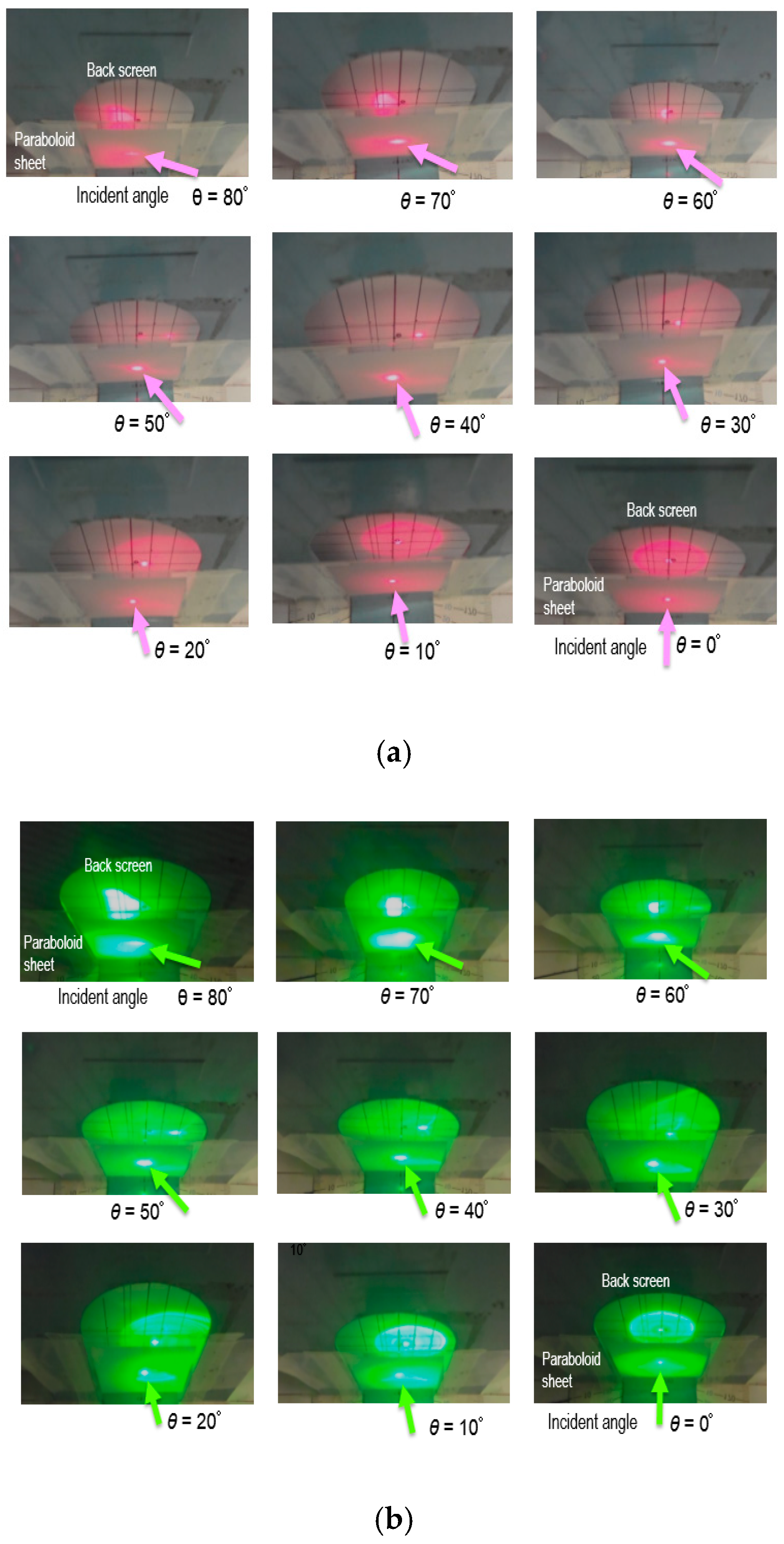
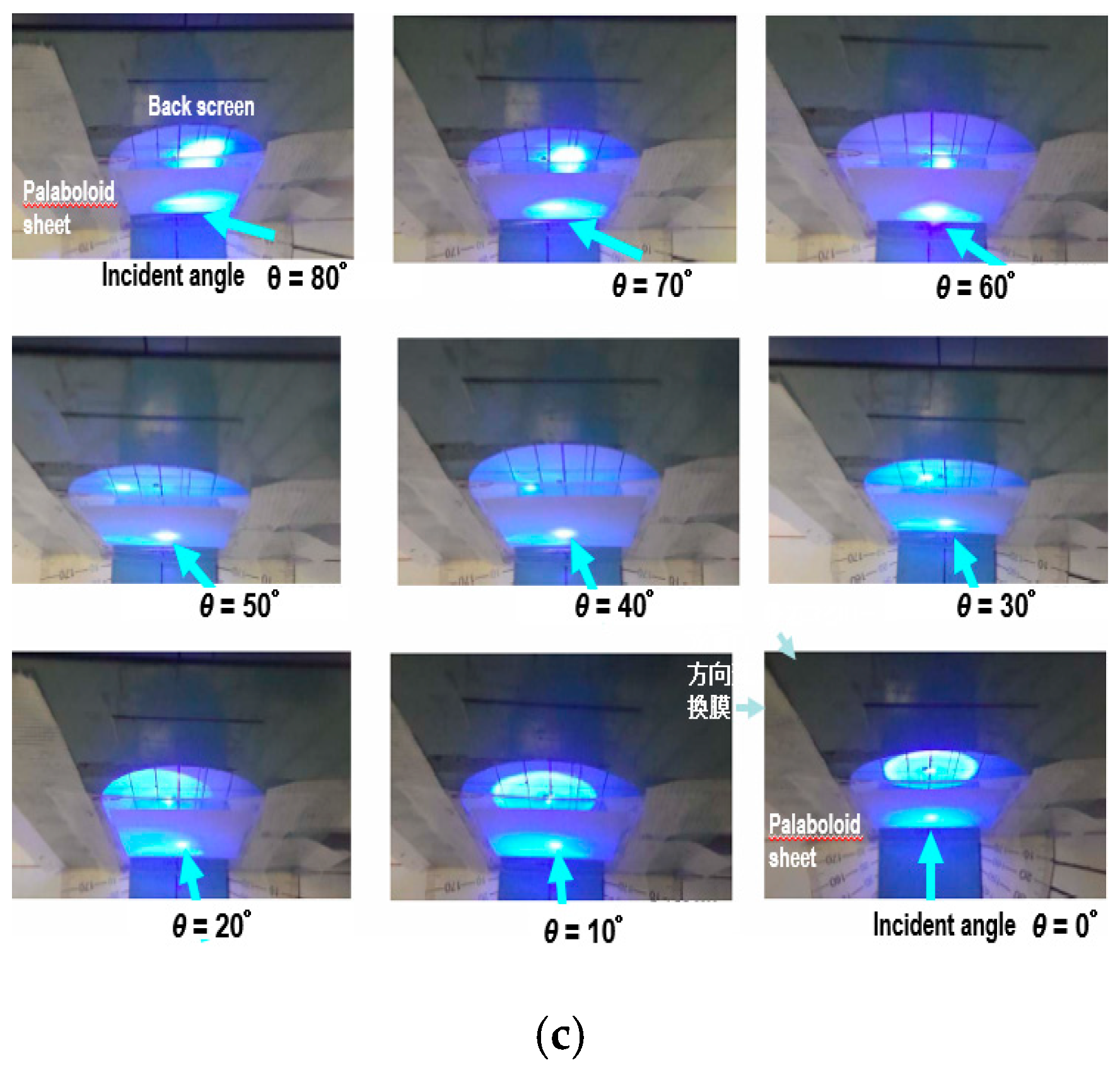
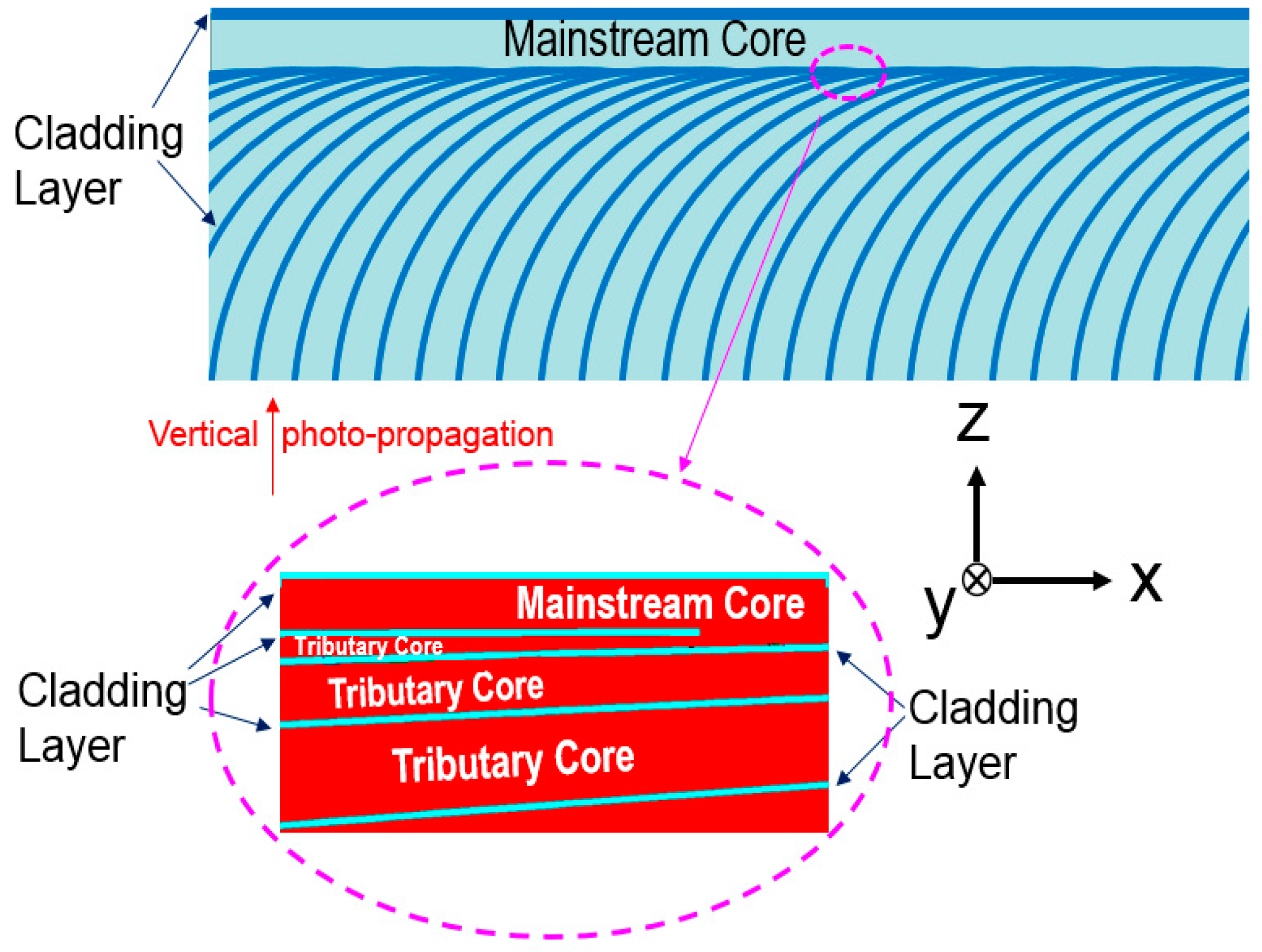
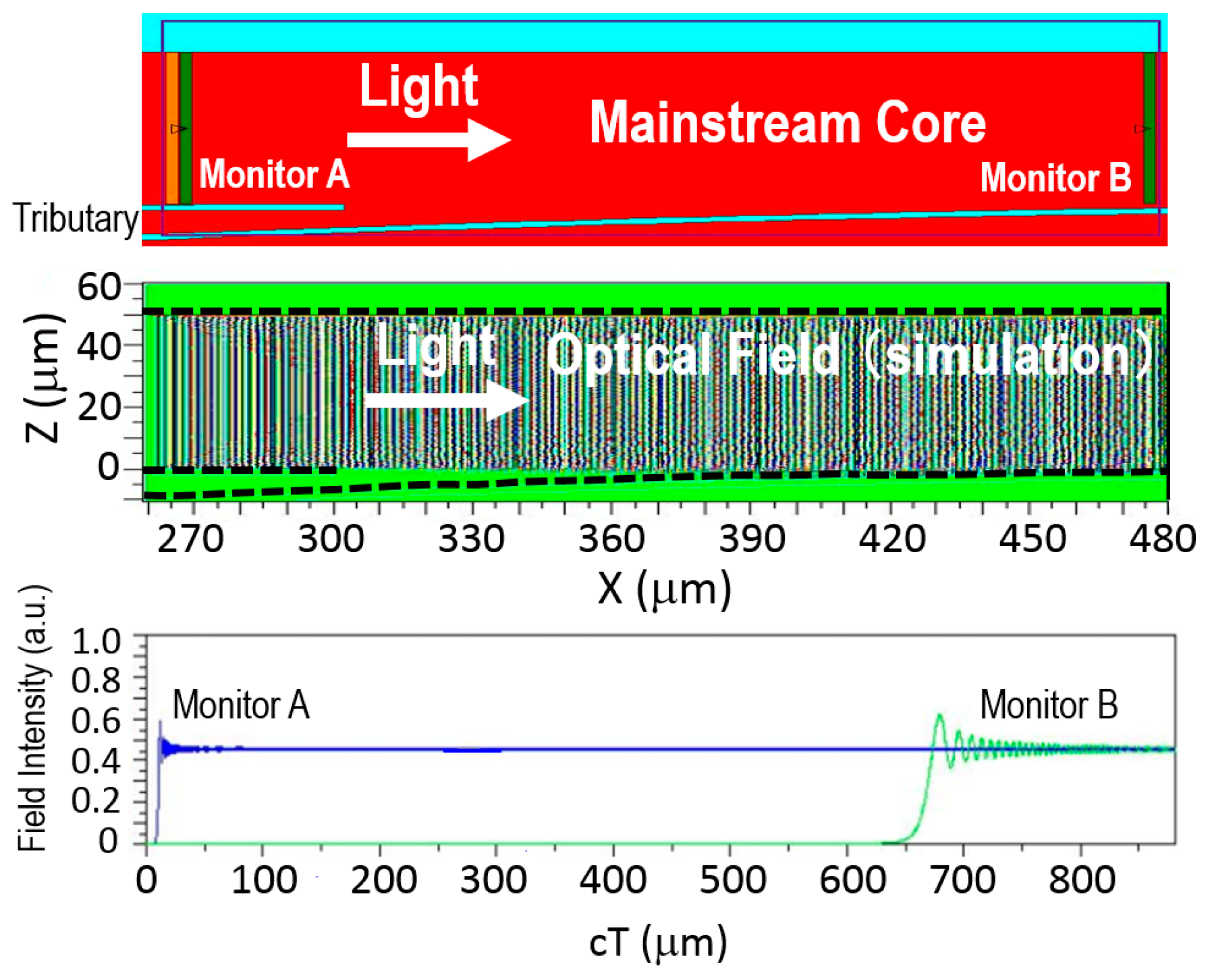

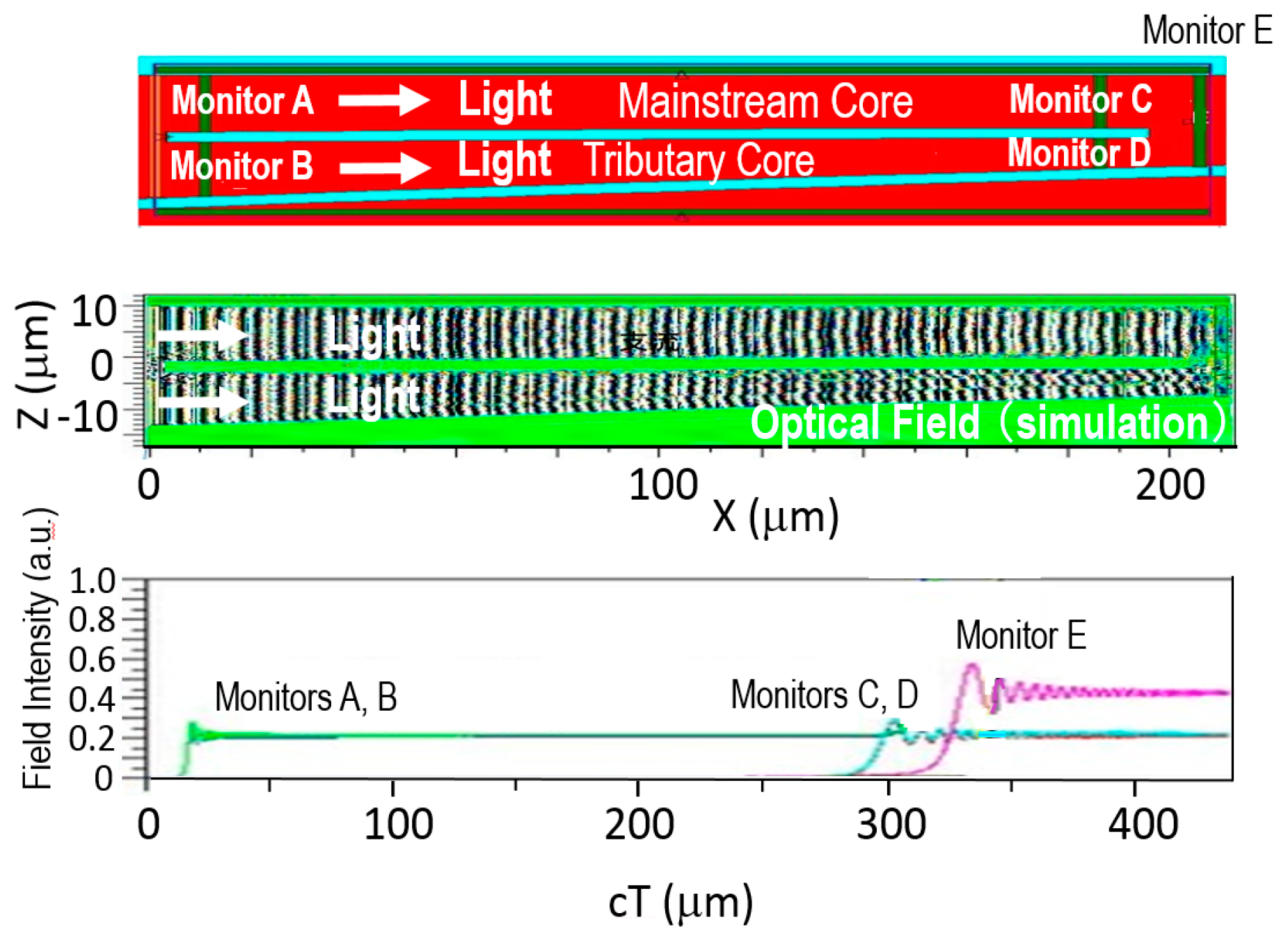
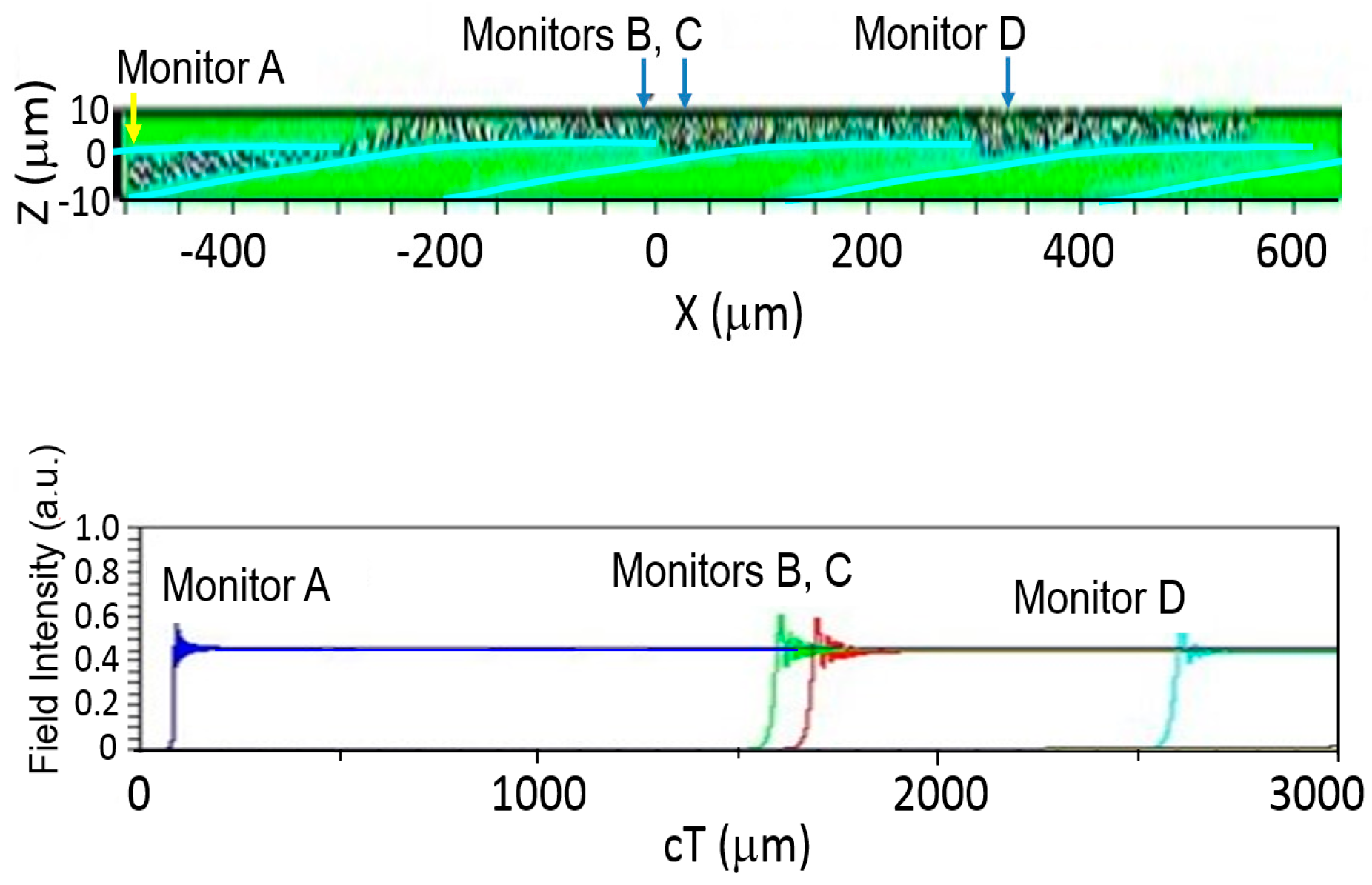
© 2018 by the authors. Licensee MDPI, Basel, Switzerland. This article is an open access article distributed under the terms and conditions of the Creative Commons Attribution (CC BY) license (http://creativecommons.org/licenses/by/4.0/).
Share and Cite
Ishibashi, A.; Kasai, T.; Sawamura, N. Redirection Waveguide having Discrete Translational Symmetry for Photovoltaic Systems with Solar-Cell Units Placed at the Periphery. Energies 2018, 11, 3498. https://doi.org/10.3390/en11123498
Ishibashi A, Kasai T, Sawamura N. Redirection Waveguide having Discrete Translational Symmetry for Photovoltaic Systems with Solar-Cell Units Placed at the Periphery. Energies. 2018; 11(12):3498. https://doi.org/10.3390/en11123498
Chicago/Turabian StyleIshibashi, Akira, Tsuyoshi Kasai, and Nobuo Sawamura. 2018. "Redirection Waveguide having Discrete Translational Symmetry for Photovoltaic Systems with Solar-Cell Units Placed at the Periphery" Energies 11, no. 12: 3498. https://doi.org/10.3390/en11123498




